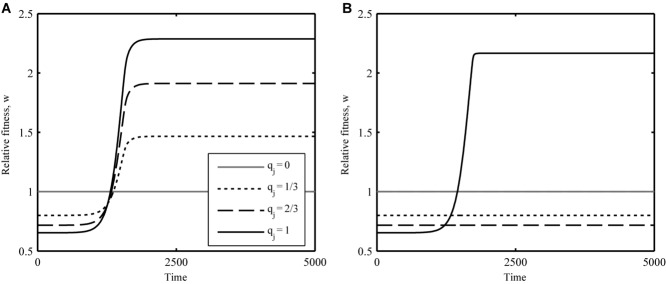Figure 5.

Example dynamics showing the relative fitness (w; eq. 11) of parasites with different proportions of loci containing infectivity alleles (qj = 0 (gray), 1/3 (dotted), 2/3 (dashed), and 1 (solid)) for (A) gradual (SYM) and (B) sudden (ASYM) changes in host phenotype (deterministic version). (A) When resistance begins to spread in a host population that exhibits gradual changes in phenotype (around 1000 time units) parasites with incomplete sets of infectivity alleles experience an immediate increase in fitness, which allows these mutations to be fixed, leading to the evolution of broad infectivity ranges. (B) If the host makes a sudden change in phenotype, then parasites with incomplete sets of infectivity alleles may not experience an immediate increase in fitness. Hence, infectivity alleles may not accumulate when demographic stochasticity is included, even though parasites with a full complement of infectivity alleles have the highest fitness. Parameters: α = 0.01; β = 0.25; εH = 10−6; εP = 10−6; φH = 0.5; φP = 0.5; ψ = 0; cH = 1; cP = 1.25; K = 106; n = 3; r = 0.05.
